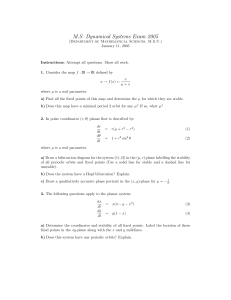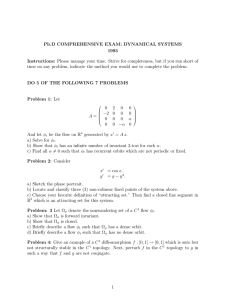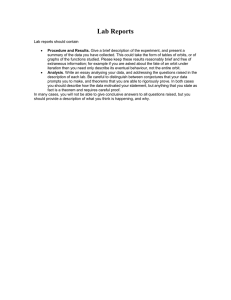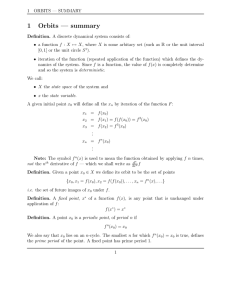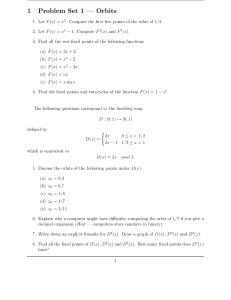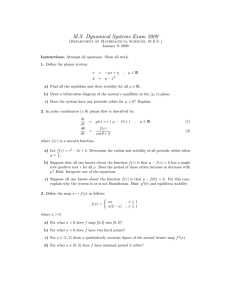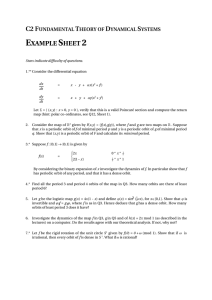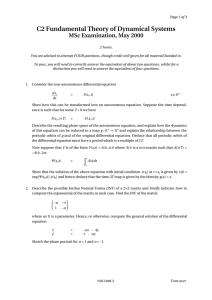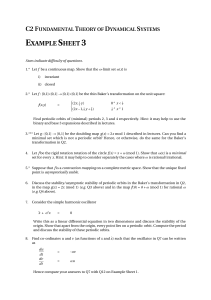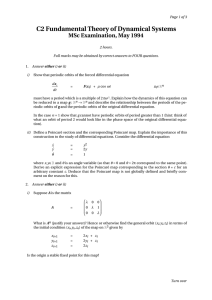M.S. Dynamical Systems Exam 2006
advertisement
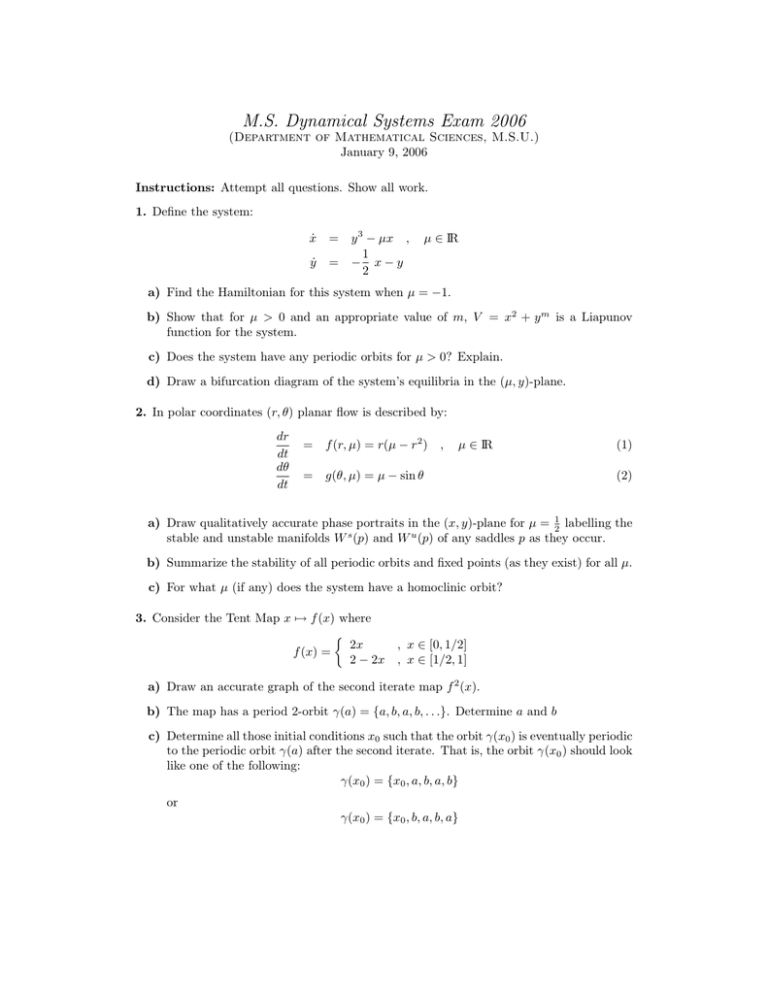
M.S. Dynamical Systems Exam 2006
(Department of Mathematical Sciences, M.S.U.)
January 9, 2006
Instructions: Attempt all questions. Show all work.
1. Define the system:
ẋ = y 3 − µx ,
1
ẏ = − x − y
2
µ ∈ IR
a) Find the Hamiltonian for this system when µ = −1.
b) Show that for µ > 0 and an appropriate value of m, V = x2 + y m is a Liapunov
function for the system.
c) Does the system have any periodic orbits for µ > 0? Explain.
d) Draw a bifurcation diagram of the system’s equilibria in the (µ, y)-plane.
2. In polar coordinates (r, θ) planar flow is described by:
dr
dt
dθ
dt
= f (r, µ) = r(µ − r2 ) ,
µ ∈ IR
= g(θ, µ) = µ − sin θ
(1)
(2)
a) Draw qualitatively accurate phase portraits in the (x, y)-plane for µ = 12 labelling the
stable and unstable manifolds W s (p) and W u (p) of any saddles p as they occur.
b) Summarize the stability of all periodic orbits and fixed points (as they exist) for all µ.
c) For what µ (if any) does the system have a homoclinic orbit?
3. Consider the Tent Map x 7→ f (x) where
2x
, x ∈ [0, 1/2]
f (x) =
2 − 2x , x ∈ [1/2, 1]
a) Draw an accurate graph of the second iterate map f 2 (x).
b) The map has a period 2-orbit γ(a) = {a, b, a, b, . . .}. Determine a and b
c) Determine all those initial conditions x0 such that the orbit γ(x0 ) is eventually periodic
to the periodic orbit γ(a) after the second iterate. That is, the orbit γ(x0 ) should look
like one of the following:
γ(x0 ) = {x0 , a, b, a, b}
or
γ(x0 ) = {x0 , b, a, b, a}
